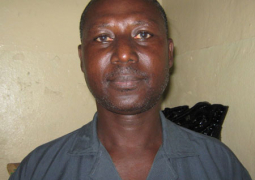Lamin Nyangado, a plaintiff who sued Actionaid for wrongful termination of his service, on 4 December 2014 continued his testimony before Magistrate Jallow of the Kanifing Industrial Tribunal, who was assisted by panelists Sosseh Colley and Mrs Davies.
Lawyer Kebba Sanyang, who was representing Lamin Nyangado, asked him: “This new position for which you were asked to apply is for head of programme and policy. Before the creation of this position you will agree with me that head of programme and policy are different departments.”
“Yes,” Nyangado answered.
“Did you apply for this position?” Kebba Sanyang enquired.
“Yes, I did,” said Nyangado.
“Were you shortlisted for an interview?” questioned Kebba Sanyang.
“No,” Nyangado replied.
“Out of interest, did you apply for the said new position within the time specified for such application to be made?” Kebba Sanyang wanted to know.
“Yes, I did,” said Nyangado.
“You said you were not shortlisted for the interview. Are you saying that you were not interviewed?” asked Kebba Sanyang.
“Yes, I was not at all,” said Nyangado, adding that he was not appointed for the new position.
“Did Actionaid acknowledge receipt of the application for the new job?” asked Kebba Sanyang.
“No, but when I submitted the application, I informed the HR manager before I left Actiondaid,” answered Nyangado.
“Do you know whether that position has been filled?” Kebba Sanyang said.
“Yes, it has,” Nyangado replied.
“Who is the occupant of this position?” asked Kebba Sanyang.
“It is Mr Kebba Sima,” answered Nyangado.
“Now, while you were working for Actionaid, you had 23 years. Was Kebba Sima an employee?” Kebba Sanyang questioned.
“Yes,” said Nyangado.
“During your tenure, you and Mr Sima, who was first employed by Actionaid?” Kebba Sanyang enquired.
“I found him there as an employee,” Nyangado replied.
“What was Mr Sima’s position?” asked Kebba Sanyang.
“He was head of impact assessment and shared learning,” Nyangado replied.
“You said he is now head of programmes and policy. What happened to the position of assessment and shared learning?” Kebba Sanyang asked.
“I would not know but I saw an advertisement in the papers similar to that position of Mr Sima,” Nyangado said.
“Is it the position of a head of a department?” enquired Kebba Sanyang.
“I am not sure,” Nyangado answered.
“You said Actionaid stated that it was embarking on a redundancy scheme. Now you are saying that they advertised vacancies to be filled,” said Kebba Sanyang.
“Yes, and there were two appointments in November and they were anticipated in December,” Nyangado answered.
“How many people did the redundancy policy affect?” asked Kebba Sanyang.
“Only two,” Nyangado said.
“Who are those people?” questioned Kebba Sanyang.
“Myself and one lady called Rella Kah, who was not the head of a department,” Nyangado told the tribunal.
“What was she in the organization?” Kebba Sanyang asked.
“She was the communication and documentation coordinator,” replied Nyangado.
“Was this a managerial position?” Kebba Sanyang enquired.
“No,” said Nyangado.
“Are you familiar with the organogram?” Kebba Sanyang asked.
“Yes,” Nyangado said.
Mr Nyangado was given a document by Kebba Sanyang and asked if it was the organogram.
“It is a version of it,” said Nyangado, adding that it came after the so-called restructuring and there was one before it, and there was a final one.
He said this was not the organogram when he was made redundant, adding that he has the real organogram.
Kebba Sanyang then applied to tender the organogram which the plaintiff stated was the one in place at the time the restructuring took place.
Hawa Sisay-Sabally, who was representing Actionaid, rose and said she was objecting to the tendering of the document.
She stated that the document appeared to be a computer generated document, adding that the foundation for it to be admissible had not been laid.
Furthermore, she argued, it was supposed to be an organogram which stated the structure of an institution.
She said the document was not signed by whoever was the maker, and that it was not dated.
She posited that it could have been generated by a third party other then Actionaid.
“Furthermore, in as much as it bears the name of Actionaid, it has not been certified by Actionaid,” Hawa Sisay-Sabally submitted.
She added that the plaintiff, Lamin Nyangado, had not in his evidence stated how he acquired the document.
“If this document is claimed to be a document of the defendant, then a notice ought to have been served so that it would be put beyond doubt if the original is found,” she argued, adding that the document was not the document of the defendant. She urged the tribunal not to admit it.
Kebba Sanyang then submitted that the objections relating to the foundation, date, certification are all rules of evidence and do not apply in the tribunal, which is enjoined and empowered by the Labour Act.
At this juncture, he applied for an adjournment to continue his submission.
The case was adjourned till 22 December 2014.



